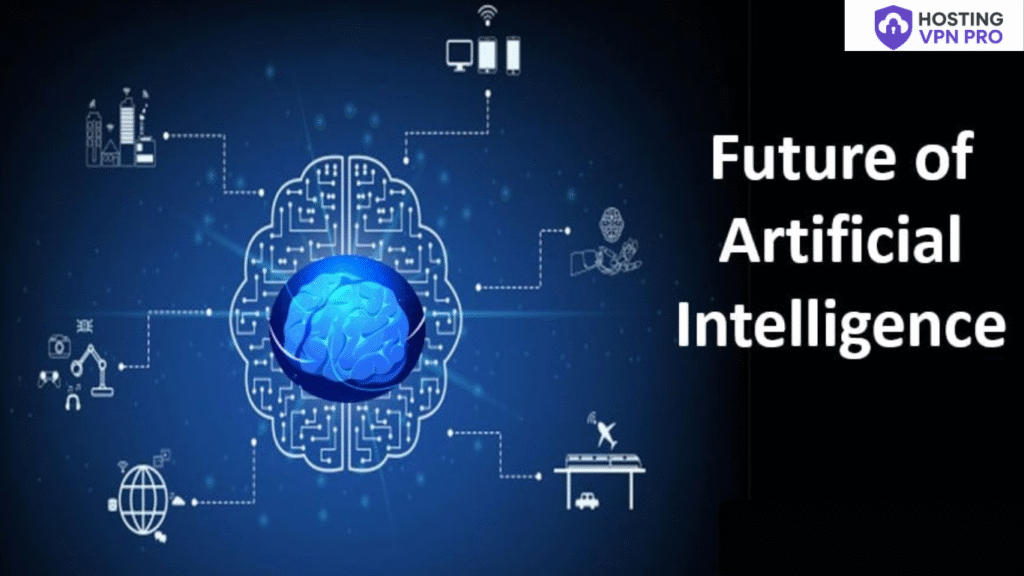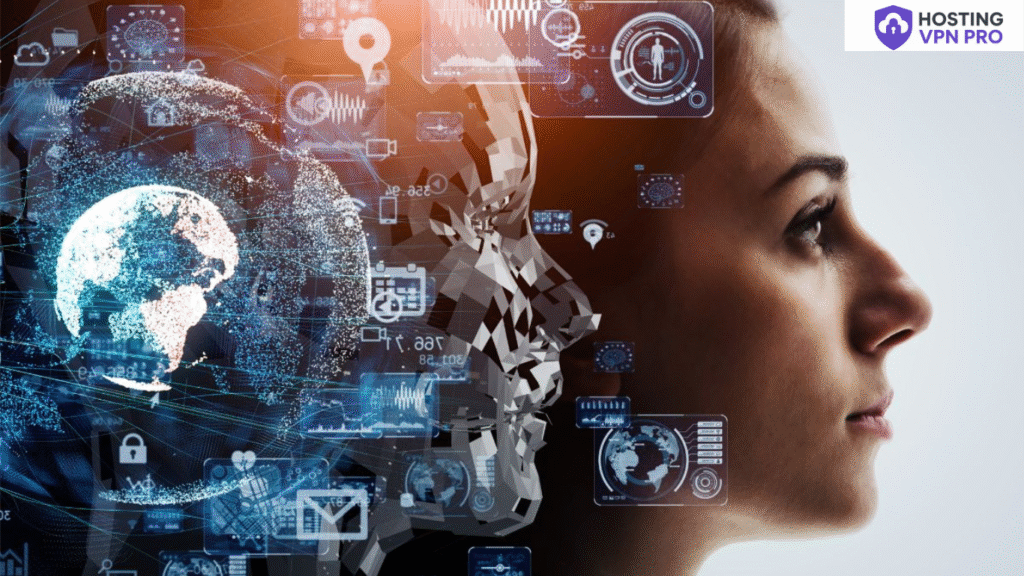Artificial Intelligence refers to the intelligence of machines. This is in contrast to the natural intelligence of humans and animals. With Artificial Intelligence, machines perform functions such as learning, planning, reasoning and problem-solving. Most noteworthy, Artificial Intelligence is the simulation of human intelligence by machines. It is probably the fastest-growing development in the World of technology and innovation. Furthermore, many experts believe AI could solve major challenges and crisis situations.
Table of Contents
Although AI has a strong science fiction connotation, it forms a vital branch of computer science, dealing with intelligent behaviour, learning and adaptation in machines. Research in AI is concerned with producing machines to automate tasks requiring intelligent behavior. Examples include control, planning and scheduling, the ability to answer diagnostic and consumer questions, handwriting, speech, and facial recognition. As such, it has become a scientific discipline, focused on providing solutions to real life problems. AI systems are now in routine use in economics, medicine, engineering and the military, as well as being built into many common home computer software applications, traditional strategy games like computer chess and other video games.

Artificial intelligence (AI) has a great role in the field of robotics. Artificial Intelligence in robotics covers topics like natural language processing, design, human factors, and computing theory. Natural language processing, a subfield of Artificial Intelligence, provides computers with the understanding they require to handle information being encoded by humans. Computer vision instructs computers on how to comprehend images and scenes. It has some of its goals: image recognition, image tracking and image mapping. This application is valued in the fields of medicine, security, surveillance, military operations, even movie-making.
Also Read- DNS Full Form | Meaning, Working, Types & Importance Explained
The most famous of all uses for artificial intelligence systems is robotics. Robotics is the study and development of robots Applications of artificial intelligence with robotics have taken into account in many Hollywood films. From the android Data in Star Trek, to C3PO in Star Wars, people have been engaged in science fiction with countless numbers of computerized robots. In today’s world, those types of robots are still fictional. However even today we use robots in countless applications. The automation of many assembly lines now, we use robots. For example, many auto manufacturers now employ the use of robots in many jobs which require a large amount of strength. AI can greatly increase the rate of work in manufacturing.
Manufacturing of a huge number of products can take place with AI. Furthermore, the entire production process can take place without human intervention. Hence, a lot of time and effort is saved. Artificial Intelligence has applications in various other fields. These fields can be military, law, video games, government, finance, automotive, audit, art, etc. Hence, it’s clear that AI has a massive amount of different applications.
To sum it up, Artificial Intelligence looks all set to be the future of the World. Experts believe AI would certainly become a part and parcel of human life soon. AI would completely change the way we view our World. With Artificial Intelligence, the future seems intriguing and exciting.
Evolutionary computation: applies biologically inspired concepts such as populations, mutation and survival of the fittest to generate increasingly better solutions to the problem. These methods most notably divide into evolutionary algorithms (e.g. genetic algorithms) and swarm intelligence (e.g. ant algorithms). The world is composed of three-dimensional objects, but the inputs to the human eye and computer’s TV cameras are two dimensional. Some useful programs can work solely in two dimensions, but full computer vision requires partial three-dimensional information that is not just a set of two-dimensional views. At present there are only limited ways of representing three-dimensional information directly, and they are not as good as what humans evidently use.
One of the most feasible kinds of expert systems given the present knowledge of AI is to put some information in one of a fixed set of categories using several sources of information. An example is advising whether to accept a proposed credit card purchase. Information is available about the owner of the credit card, his record of payment and also about the item he is buying and about the establishment from which he is buying it (e.g., about whether there have been previous credit card frauds at this establishment).
(FAQs)
What is Artificial Intelligence (AI)?
Artificial Intelligence is the simulation of human intelligence in machines that can perform tasks like learning, reasoning, problem-solving, and decision-making.
What are the main applications of AI?
AI is used in robotics, medicine, economics, military, engineering, law, finance, video games, facial recognition, speech recognition, and automation.
Is AI the same as robotics?
Not exactly. Robotics is a field that builds robots, while AI provides the intelligence that allows robots to perform tasks smartly. Together, they create intelligent robotic systems.
How does AI impact our daily lives?
AI is present in voice assistants (Siri, Alexa), recommendation systems (Netflix, YouTube), chatbots, navigation apps, self-driving cars, and even online fraud detection.
What is Natural Language Processing (NLP)?
NLP is a subfield of AI that helps machines understand and process human language, enabling applications like chatbots, translation tools, and virtual assistants.
What is Computer Vision in AI?
Computer vision is the AI technology that allows machines to interpret and analyze visual data such as images and videos. It is widely used in security, healthcare, and self-driving cars.
How does AI help in manufacturing?
AI-powered robots automate assembly lines, perform repetitive tasks, and increase efficiency. This saves time, reduces errors, and boosts productivity.
What are some future possibilities of AI?
Experts predict AI will revolutionize healthcare, space exploration, education, climate change solutions, and personalized digital experiences.
Is Artificial Intelligence dangerous?
AI itself isn’t dangerous, but misuse can be. Concerns include job loss, privacy issues, deepfakes, and autonomous weapons. Responsible use and regulations are key.
Will AI replace humans in the future?
AI may replace some repetitive or manual jobs, but it will also create new roles in AI development, data science, and advanced industries. Instead of replacing humans, AI is expected to complement human abilities.


